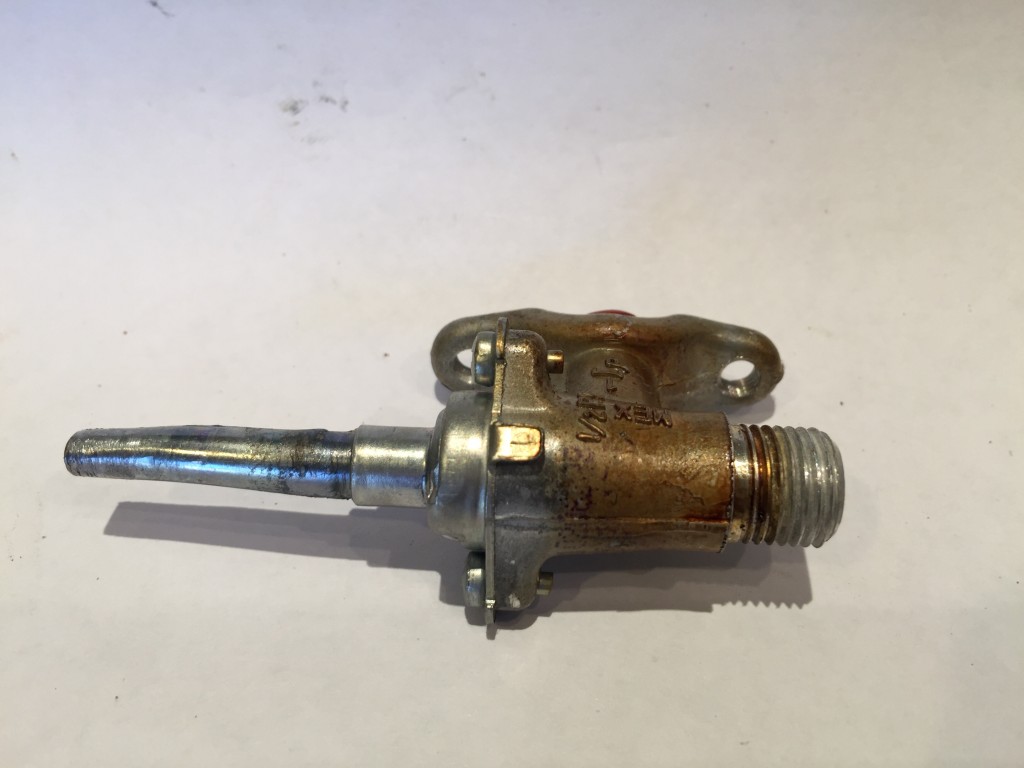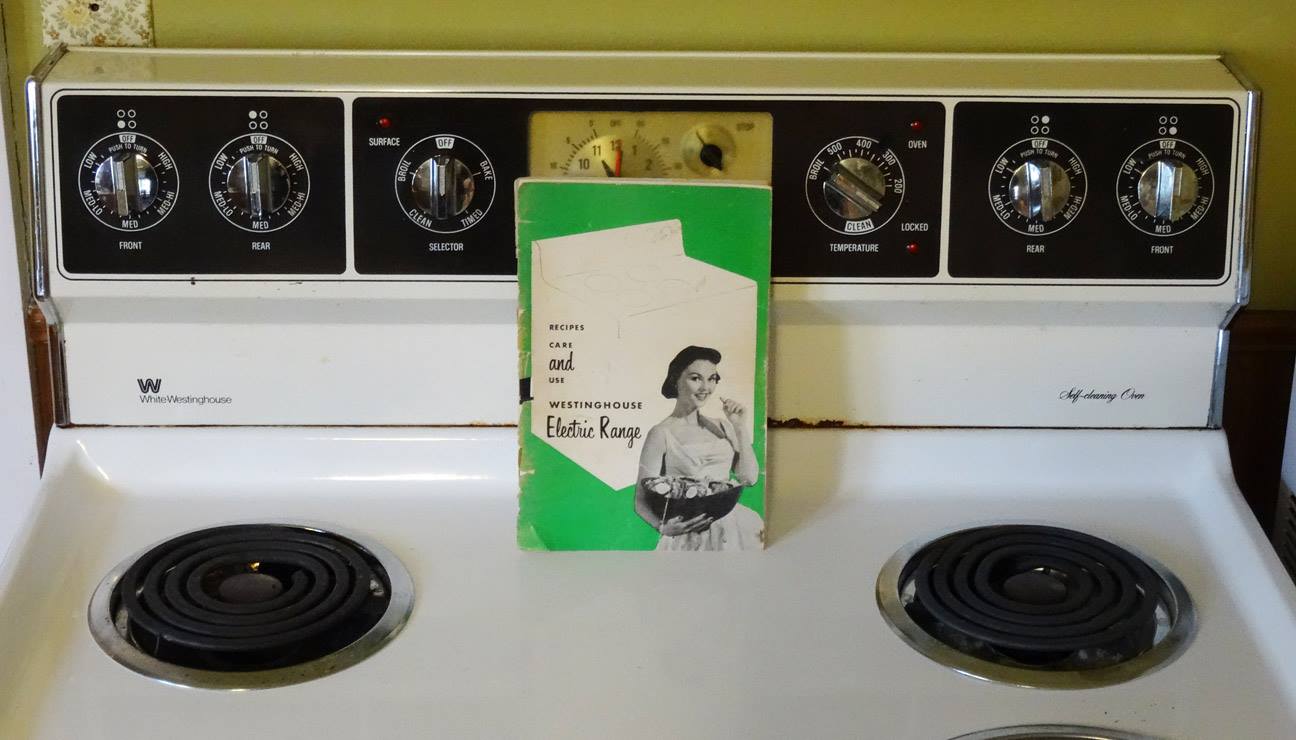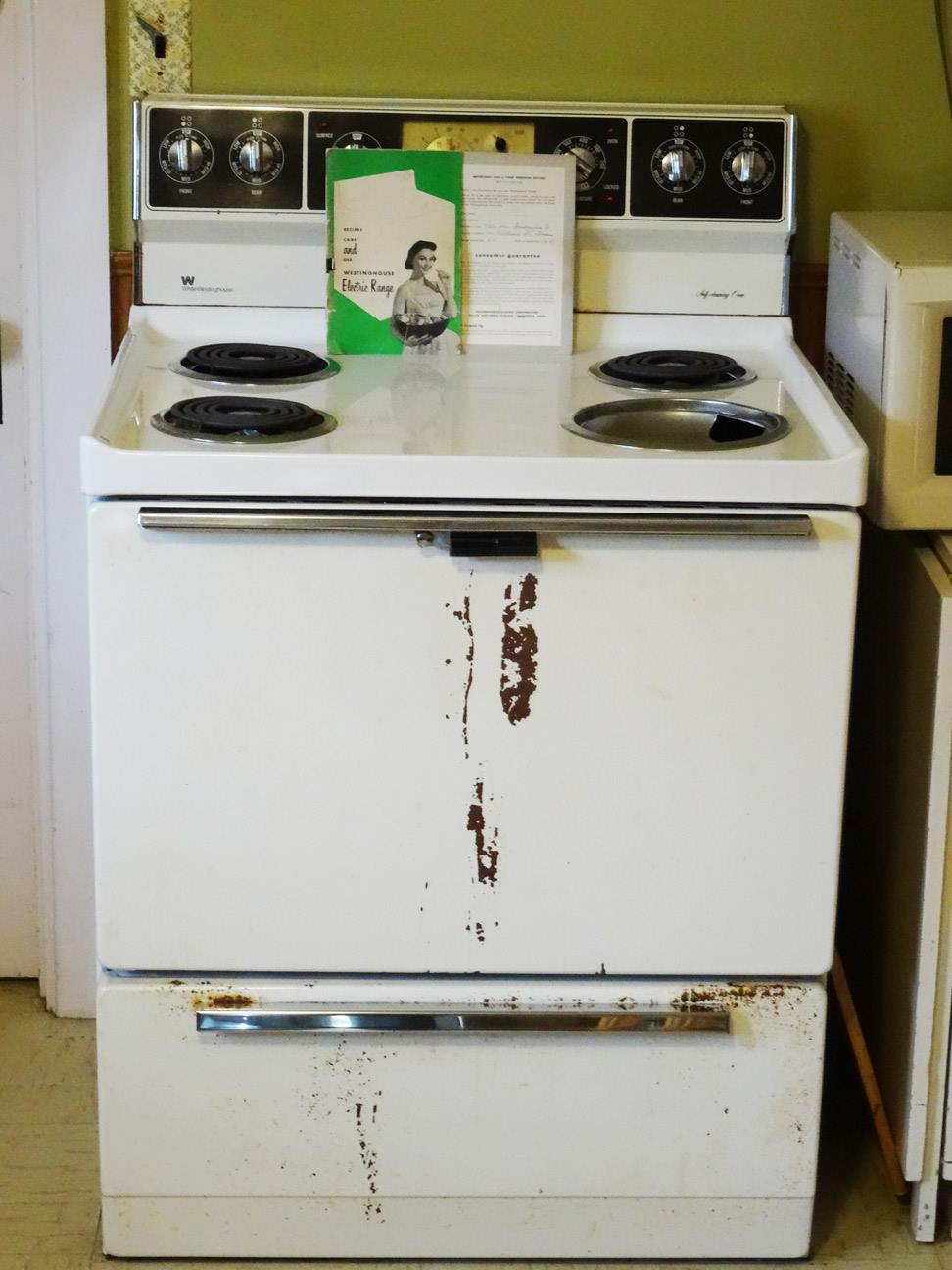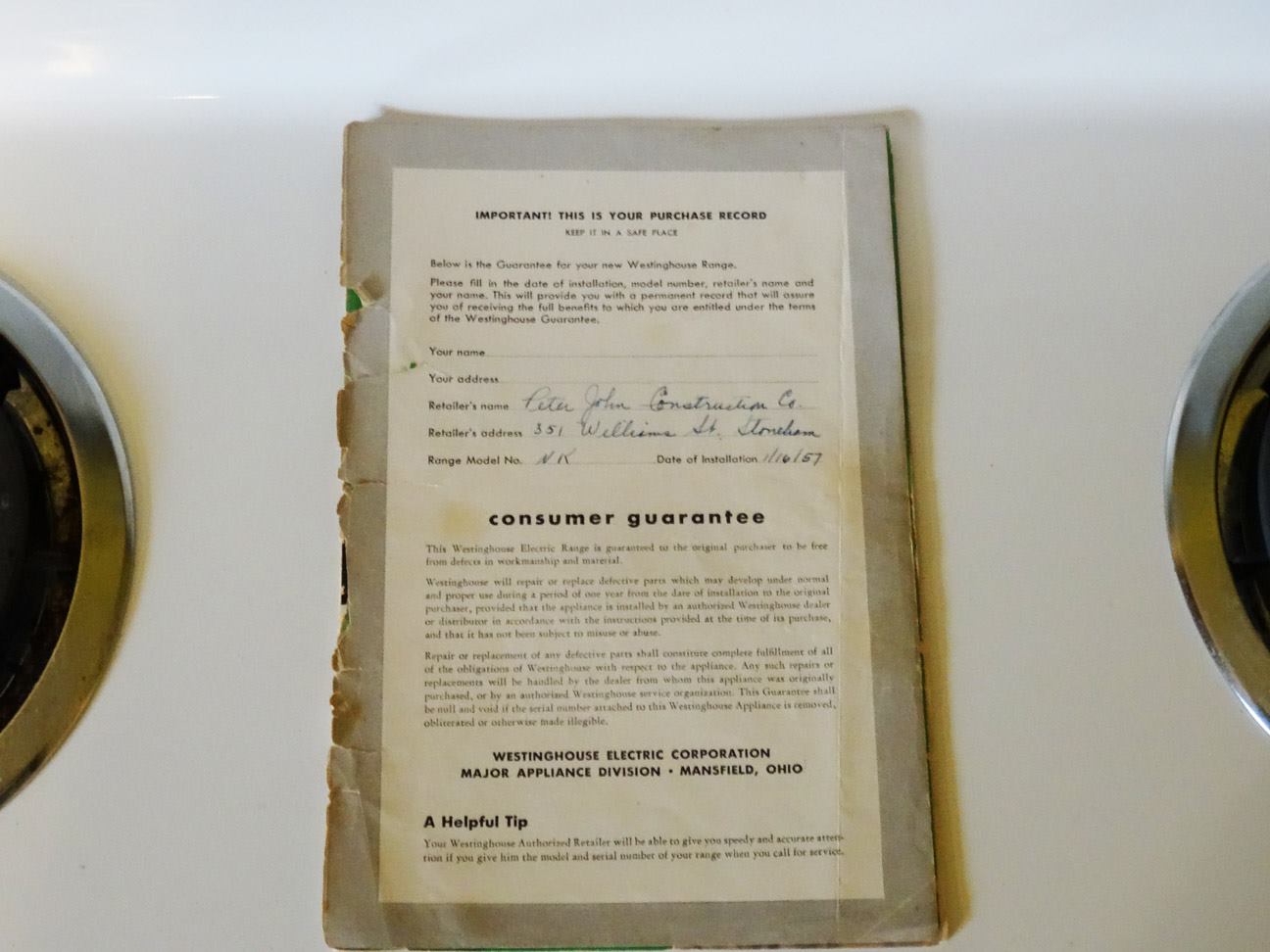Two months ago Whirlpool tried to explode our suburban house with natural gas (previous posting) during a failed attempt to repair a less-than-five-year-old range (and in fact it turned out that it could never have been repaired; follow-up posting). Through their KitchenAid division they then tried to burn down our Cambridge apartment with a less-than-three-year-old dual-fuel range. The range had been top-rated by Consumer Reports, which shows the danger of relying on tests done on fresh-out-of-the-box products. The knobs don’t seem to control the gas directly, unless the valves are very light [See updates below; they actually are gas valves]. You push a knob in and turn it and the gas comes on, the burner lights, and you’re cooking. What if the mechanical interlock that keeps the knob from turning, unless it is pushed in, jams? Then there is no way to turn the burner off. If the gas flow is electronically controlled you’d think that there would be an “all burners off” option on the oven control/clock panel, but there is not. With four adults in the house, two of whom have engineering backgrounds, and a pair of pliers, we managed to get the burner off after about 15 minutes of experimentation. Until that happy moment we had four adults and three kids in an apartment with an open flame that could not be extinguished.
[Note that the range had previously failed, also out of warranty, with a control board that emitted a continuous 60 Hz. buzzing (would reset if the breaker was turned off then back on). And the companion $1,500 KitchenAid dishwasher suffered from two failures in less than 12 months of use, requiring a total of at least six service visits (it now has a new control board and circulation pump and works pretty well).]
I called the KitchenAid 800-number to arrange service. They took the position that because the range was more than one year old they had no responsibility for repairing it and would charge me for an out-of-warranty repair. I was curious to see if this was the final answer so I asked to speak to a supervisor. After I asked “Can you really design a product that will burn a customer’s house down and then charge them to fix it?” I was transferred to someone in the safety department who finally agreed that Whirlpool would cover the new control knob.
As it happens, my friends’ two-bedroom rental in Beaver Creek, Colorado has a new-looking KitchenAid gas cooktop. Half of the burners won’t light. Gas flows and an igniter sparks (sometimes on a different burner, though), but there is no resulting flame.
While I have been struggling with these new-and-not-cheap ranges, a friend posted these photos on Facebook:
He was replacing a White Westinghouse range, purchased in 1957, that was working perfectly at the time of its de-installation, 59 years later. He wanted a convection oven, but I am wondering if he will come to regret this decision!
Readers: I hate to sound like the old codger who claims that everything was built better in the old days, but is it time to give up on natural gas as a cooking fuel? If you combine the engineering departments of American appliance manufacturers with the expected skill level of repair technicians who are going to show up, would it make sense to say that all new ranges and cooktops should be electric? (induction?) What about foreign brands? Are Korean-engineered (Samsung and LG) or German-engineered (Miele) gas ranges more reliable and therefore, considering the power source, safer? And should we give up on high-end appliances? If the expensive ones are going to fail every few years, why not buy bottom-of-the-line products that can be replaced for about the same cost as a repair?
Update 2/19/2016: Whirlpool factory service shows up to try to fix the problem. My report of a stuck gas burner turned into a written note that the (electric on this model) baking element had failed. So the repair guy didn’t have the correct parts.
Update 2/22/2016: Whirlpool factory service shows up with the gas valve. It turns out that the knobs are directly connected to a common gas line:


Unfortunately, somehow the old knob wouldn’t fit onto the new valve. So the saga continues with a quest for a new knob…



Although I am usually a fan, I am not so convinced Consumer Reports is the place to consult if you are interested in appliance longevity. I replaced a brand name clothes washer ($800) that imploded after 2 years (fried circuit board) with a Speed Queen washer. It is built and looks exactly like a clothes washer from a laundromat in the 1970s. Metal gearbox. Good warranty. Cheap timer. No electronics. Consumer Reports gives it a poor review, due to it’s (admittedly) old fashioned top loading design and high water use. I plan to run this for the next 20 years, and if the timer breaks, it’s $30 to fix. It also does a great job cleaning clothes, except delicates, which need to go in a mesh bag. I also think super high-end goods are not built with durability in mind.
It is the case that they have de-engineered (if that the is right word) the newer appliances.
For instance, due to copper’s cost, they replaced the windings on a motor such as that used in a dryer, with aluminum. Aluminum works fine as long as there is never a surge or other condition that overheats it for that brief period of time needed for it to melt and thus, short.
There is no reason whatsoever that natgas should be a cause for concern – even in areas with less-precise manufacturing, such as FSU or Philipppines, things are engineered to be sturdy and safe. It is only a concern when de-engineering kicks in.
I’ve cooked on a variety of high-end gas cooktops, and there’s not one that I’d take over the 36” GE induction cooktop that we bought for our new house. Heat adjustment speed and power are just as fast as gas, and the efficiency means that it kicks out very little waste head. Plus the glass surface makes for trivial clean-up. You do need compatible cookware (available at a range of price levels), and the elements pause when you lift the pan. This results in a slight delay (~1 sec) before they kick on again when you replace the pan.
My RangeMaster has automatic gas cutoff, which I assume yours also must have. So you just give the flame a good hard blow, the flame goes out, and a second later the gas cuts off (you can hear something go thunk, and no more hissing sound).
I second Andreas suggestion of going for induction. Especially if you like to avoid burning down the house or burning the hands of your kids.
1. “an open flame that could not be extinguished” – you are making this sound more dramatic than it really is. All that happened is that the burner was on for 15 minutes – same as if you were cooking a pot of spaghetti. No danger.
2. You should know where the gas shutoffs for your house /apartment are and how to turn them off. In 15 seconds, not 15 minutes. There is almost certainly one directly behind your stove where the gas pipe emerges from the floor/wall – all you have to do is pull the stove out (you should be cleaning back there now and then anyway) and turn the valve 1/4 turn and your “open flame” would have gone out. And there is another one that is built into your gas meter and probably yet a third at the distribution manifold. Also learn how to turn off the water and electricity. Every adult in the house should know how to do this, both at each fixture/appliance and at the main valve/breaker.
3. Regarding the 1957 stove – an electric range has no moving parts, it’s just a resistance wire. As long as the wire doesn’t burn out (and elements are cheap and easy to replace) it will last forever. Electric stoves were always the best option before induction. They were frowned upon by the expensive kitchen crowd because they didn’t signal status the way a Viking or Wolf gas range would.
4. Get an induction stove. Once you have experienced one (buy a cheap induction burner on Amazon to experiment) then cooking with an open flame will seem cave-man like. I can rest potholders and other flammables on my induction stovetop right next to a boiling pot and nothing will happen. If you get a portable induction burner (or 2 – on separate circuits) you will rarely have to use your gas stove again.
5. If you go on the Consumer Reports website, very often the consumer reviews of the top rated appliances reveal that they are duds in terms of long term reliability. A highly rated gas grill may burn thru in a season or two, etc. and their testing wouldn’t reveal this.
6. As for your friend, tell them to get a butane grill lighter (costs $1 at any dollar store) and their stove will work fine.
7. The difference between “high end” and “low end” appliances from American mfrs. is often mostly cosmetics. The “high end” fridge will have glass shelves and LED lights and stainless and the low end will be wire and a light bulb and painted steel but the refrigeration system is the same. The same thing is true with cars. Mostly “high end” is about status signaling rather than functionality. For years Consumer Reports gave horrible reviews to “high end” stoves like Viking, often putting them at or near the bottom. You could cook better on a $199 Hotpoint stove but your friends would not be suitably impressed. For imported appliances, you pay a big premium because of the low volume distribution channel (see you ski vs. rental car posting) and good luck getting parts in the future. The other good thing about the fact that most American appliances are the same under the skin is that there is a lot of commonality in parts, both between brands and over time and the parts are cheap. I recently fixed the motor coupling on my MIL’s Kitchenaid washer and they have used the same $5 coupling on every one of their top loading washers (Admiral, Amana, Crosley, Estate, Inglis, Kenmore, KitchenAid, Magic Chef, Maytag, Roper, Whirlpool) for 30 years. Even if they stop making them, you will be able to get that part (of which their are also “aftermarket” versions) for the next 30 years afterward because there are so many millions of them out there.
Just get an LG, or you will be enjoying that perfectly matching $5 coupling that takes two days and two people to replace, every couple of years.
A few years ago we renovated our kitchen, and switched from a Jenn-Air electric range to a Wolf gas range. The model we purchased (intentionally) was made before Subzero purchased Wolf. The new range has been extremely reliable (for 3 years), and I wouldn’t hesitate to recommend the open-burner technology (still available from other manufacturers) if you have room for it. The built-in griddle gets a lot of use, too, although in retrospect I wish we’d bought the model with a larger griddle and two fewer burners.
The comments about induction resonate with me. I’ve wondered if we should have gone with an induction range, and I’ve even considered getting a counter-top induction module to try it out. The only thing that gives me pause are reports that induction cooking can be slow. One of the things I really like about our gas range is how quickly we can boil a pot of water on it.
With all the 3d printing going on, the time for an open-source stove is near.
I’ve seen these high-end ranges in other peoples’ kitchens and they’re sure pretty and I suppose quite capable. But I do mostly everyday, run-of-the-mill kinds of cooking in my home, and pretty much any old range will work for that. So I’ve got a Kenmore (glass cooktop and separate wall oven) and they’re fine. They’re probably 15 years old now.
I have a six year old Whirlpool gas stove that I bought at Sears. Never had a problem with it.
YMMV.
I haven’t tried an induction stove, but I greatly prefer natural gas, and I know where the cutoffs are for the stove and the house as a whole.
“The only thing that gives me pause are reports that induction cooking can be slow.”
These reports are wrong, especially for built in induction cooktops that can use high wattages. Portables are limited to 1800 watts because more would blow the breaker on a 15 amp/ 120V circuit but 240V hard wired units can go much higher. But even the 1800W portables are pretty fast. On paper gas units put out more BTUs but a large portion of the energy of a gas flame goes into the air and doesn’t heat the pot/food while almost 100% of electrical energy in an induction burner goes into heating the pot.
If there is any beef against induction (especially the portable units) it’s that they change their levels in discrete steps. Some cheap portables only have 10 levels and sometimes say you want a simmer and level 5 gets you a vigorous boil while 4 is not boiling at all. But the built in units usually allow finer steps .
“Just get an LG, or you will be enjoying that perfectly matching $5 coupling that takes two days and two people to replace, every couple of years.”
This is just plain wrong. There are numerous you-tube videos on how to replace the coupling – takes about 10 minutes. These machines are designed to be put together quickly and with minimal labor in the factory and they come apart just as quickly. You don’t even need to unscrew many screws – a lot of the parts just snap together. The coupling on my MILs machine lasted 20 years before it broke and the new part was improved over the original factory part (they added a metal bushing).
LG’s are nice machines (I own one) but they are complex compared to the old school top loaders that are built like Soviet agricultural equipment. I’m sure that one day one of the the circuit boards on my LG will fry and if I can still get the board it will be big $ to replace it, vs. the electro-mechanical timers that run the old top loaders.
“I’ve seen these high-end ranges in other peoples’ kitchens and they’re sure pretty and I suppose quite capable. But I do mostly everyday, run-of-the-mill kinds of cooking in my home, and pretty much any old range will work for that…”
In my experience, the fanciness of the stove and the amount of cooking actually done on it are inversely proportional. There is a many a La Cornue that has never even been fired up, with the only “cooking” in the show kitchen consisting of warming up takeout food in the microwave.
Back when I lived in a rundown studio apartment on Malborough street in Back Bay Boston, I had a stove and oven with gas. There were two pilot lights on the stove and one in the oven. I grew up in Florida with electric ranges, so I was a bit clueless, but I was sure I smelled gas in the kitchenette. Turns out one of the pilot lights was off and spewing gas. I tried multiple times to keep it lit but it would always blow out while I was out of the house. I don’t know how I managed not to blow up the place, maybe the volume of gas leaking from the pilot light was not enough to make things dangerous. In the end, I plugged the bad pilot light with some putty since I didn’t want to call the maintenance people- they would often give themselves a tip by stealing random things from my apartment after “fixing things” when I was not there. Forgot about trying to schedule a stay-home appointment either.